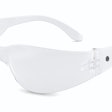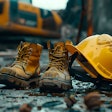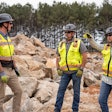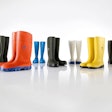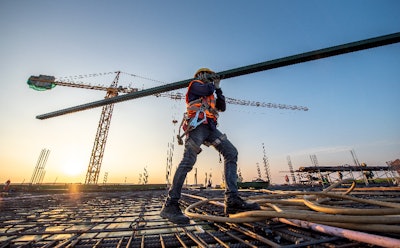
The Occupational Safety and Health Administration (OSHA) emphasizes the importance of leg protection while on the job. A construction worker may be exposed to falling or rolling objects. Working around hot substances, corrosive or poisonous materials means workers must have protective gear to cover exposed body parts, including legs. Sharp objects, electrical hazards and working around hot, wet or slippery surfaces also may present issues for workers who are not wearing work pants that are designed to provide significant protection.
The loss of safety and comfort are the two primary reasons that a construction worker should take into account when choosing to replace work pants that show signs of wear and tear to the point they are no longer able to provide protection against job hazards or offer the same level of comfort.
Signs to Consider
Large holes, fraying or worn-out areas will compromise the integrity of construction work pants. Fading and discoloration is a sign of degradation in the work pants. Visibly thin material means the pants cannot no longer offer the level of protection for which it is designed. Holding up the fabric of work pants to a light source offers a visual clue as to the level of fabric degradation.
In work pants with elastic waistbands, the loss of elasticity may lead to the pants not being able to stay in place and thus becomes a safety hazard for the person wearing them.
Work pants may no longer function properly if belt loops are torn or if there are missing or broken zippers, snaps or buttons. That also goes for frayed pockets that are used to hold cell phones, tools and other essential items.
Stains and dirt on work pants that cannot be removed and foul odors picked up on the job site that cannot be removed from the pants through laundering are a driving factor in the need to replace work pants.
Extensive damage that cannot be repaired is an indicator work pants should be replaced. In addition to damage, changes in fit – pants that have become too tight, too loose or otherwise ill-fitting over time – will affect the ability of the work pants to provide protection and comfort.
Maintaining Safety in the Workplace
The ability of work pants to provide full coverage is necessary to a worker’s safety and any factor that becomes hazardous, especially when working in a high-risk environment. Case in point: high-visibility pants. If the fabric on these type of work pants has significantly faded and leads to contrasting vibrancy, it is time to replace the pants.
That also goes for work pants with hi-visibility stripes. Others may not be able to see a worker in low-visibility situations if the reflective stripe on that worker’s pants is damaged or is no longer bright, with the intensity of the reflective strip no longer meeting OSHA standards to be considered safe for use.
To determine the level of visibility of high-visibility stripes, conduct field tests and compare the reflectiveness provided by one pair of pants to another to determine whether a particular stripe is dimmer. If so, the pants should be replaced immediately.
Fire-resistant work pants are designed to maintain their protective qualities for a specified time period. Those that are wearing out to the point that they no longer provide their safety qualities should be replaced immediately.
Pants that have become stiff and have lost flexibility also need to be replaced. Those who wear double-knee work pants should be mindful of any fraying in the area around the knees, which indicates the ability of the pants to protect the knee area has become compromised.
When it comes to water-resistant pants, a clear sign that it is time to replace them is when a construction worker notices moisture getting through to the skin because the water-resistant coating or treatment has worn off.
Other factors leading to the degradation of work pants include ongoing exposure to weather elements from the UV rays of the sun to rain and snow. Over time, frequent washings or improper laundering techniques also will lead to work pants wearing out faster and not providing the level of protection for which they were designed. Consult clothing care labels to ensure how to best care for work pants.




